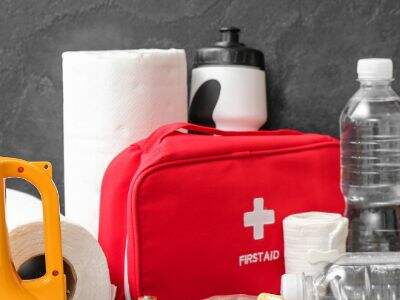A tension pneumothorax is a critical but potentially life-threatening condition that can develop rapidly. This happens when air leaks into the space between your lungs and chest wall. That air is under a lot of pressure, on both the heart and the lungs. When this occurs, the lungs may have difficulty performing the main task of breathing, and how effectively the heart pumps blood through the body is also disturbed. A few key signs of a possible tension pneumothorax are: difficulty breathing, chest pain, weak tachycardia, and cyanotic skin or lips. This initial stage is crucial to identify as soon as possible since immediate action can at times save a life.
The Thorax and the Role of a Needle
We have two lungs deep inside our chest that are essential for breathing. These lungs have a thin layer around them, called the Tourniquet pleura, Emergency Bandage which protects them. In the case of a tension pneumothorax, this could require the use of a chest decompression (a type of needle) to release the pressure. Designed for puncturing the trapped air, this needs to tell the lungs to work again. Image result for why are needle decompressions performed? Needle decompressions involve the placement of a large bore needle between 2nd and 3rd intercostals spaces over the 2nd rib to allow air to escape from pleural space. This can be a life Chest Seal saving procedure during emergencies, but this is something that only a trained medical professional should perform to avoid complications.
How to use the needle: step by step instructables
Safety Rules Before Using a Chest Decompression Needle It is very important to follow certain safety rules before inserting a chest decompression needle. First off, everyone using the needle should don gloves for safety and cleanliness. You also need to clean the area in which the needle will go in. In adults, the needle should be inserted in the second intercostal space, or between the ribs, just medial to the collarbone. In kids, the needle goes in the 4th or 5th intercostal space laterally. You want to insert the needle straight, as in a 90 degree angle, until air can be released. In a successful procedure, they should start breathing better and will generally feel better.
 EN
EN
 FR
FR
 DE
DE
 IT
IT
 JA
JA
 KO
KO
 RU
RU
 ES
ES
 AR
AR
 BG
BG
 HR
HR
 DA
DA
 NL
NL
 FI
FI
 EL
EL
 NO
NO
 PL
PL
 PT
PT
 RO
RO
 SV
SV
 TL
TL
 ID
ID
 SR
SR
 UK
UK
 VI
VI
 SQ
SQ
 TH
TH
 TR
TR
 AF
AF
 MS
MS
 CY
CY
 IS
IS
 HY
HY
 AZ
AZ
 KA
KA
 MN
MN
 MY
MY
 KK
KK
 UZ
UZ
 CS
CS



